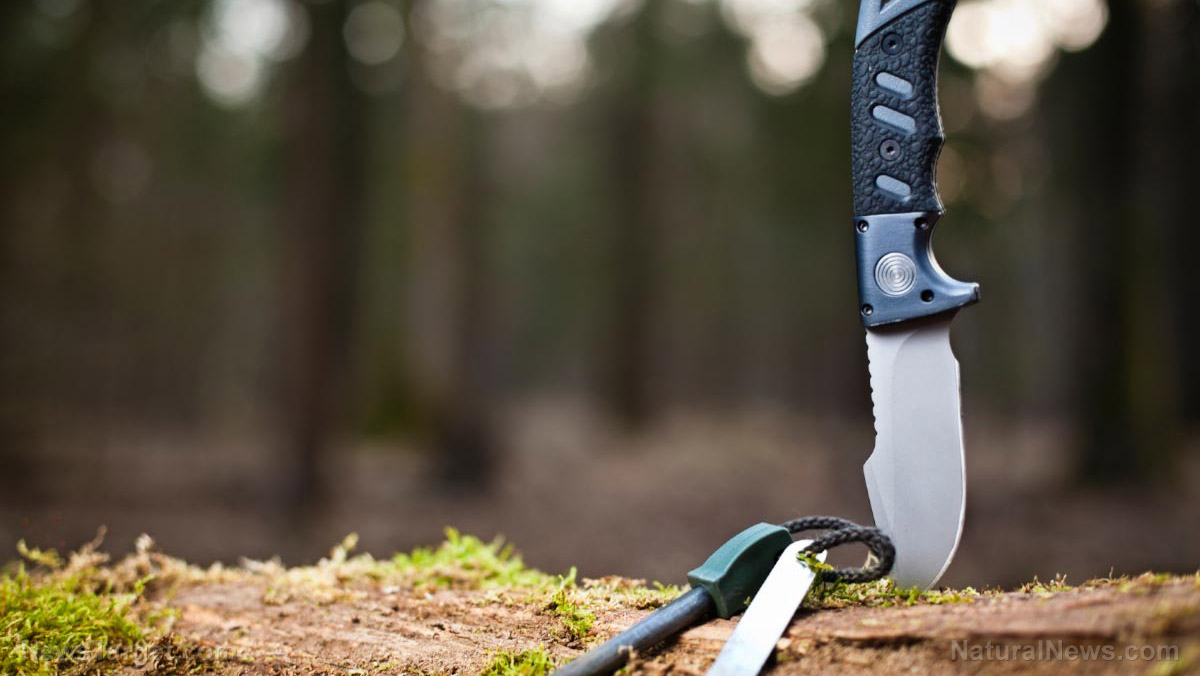DIY defense weapons: How to make your own throwing spikes
09/17/2018 / By Lance D Johnson

In a survival situation, firearms aren’t always the best weapon. They are loud and can give away your location. If you have to carry them with you, the gun and its ammo can be cumbersome. Firearms are also an easy target for thieves and could quickly be turned against you in a life or death situation.
Not all preppers and survivalists rely solely on a cache of firearms and ammo. There are quieter, less cumbersome self-defense techniques. There are ways to create traps and devise stealthy self-defense blades and spikes. Throwing spikes are an oriental martial arts weapon that may come in handy during hand-to-hand combat or in case you need to rescue a loved one who has been kidnapped.
Throwing spikes are usually not as lethal as bullets. While throwing stars and knives may cause an enemy combatant to bleed out quicker, a throwing spike would more likely puncture, disorient or disable the attacker, giving you time to escape or make a rescue.
If the grid were to go down, handheld weapons and blades will have tremendous value for negotiating with threats. Bullets will quickly be hoarded, guarded, and used up, making stealthy, handheld combat weapons more valuable. Native Americans knew how to carve stones into hunting spikes and arrowheads. Their DIY skills for turning stones into weapons were necessary for survival.
Throwing spikes can be crude and makeshift, and are therefore easier to make than knives. Throwing spikes are less cumbersome and can easily be concealed. They aren’t sharpened tediously like knives. They are not crafted to a complex shape, like throwing stars are; throwing spikes are simply crafted to a point.
Sponsored solution from the Health Ranger Store: The Big Berkey water filter removes almost 100% of all contaminants using only the power of gravity (no electricity needed, works completely off-grid). Widely consider the ultimate "survival" water filter, the Big Berkey is made of stainless steel and has been laboratory verified for high-efficiency removal of heavy metals by CWC Labs, with tests personally conducted by Mike Adams. Explore more here.
Ideal throwing spike specs
These spikes need to be heavy enough to get adequate momentum during flight so they can penetrate their target. Throwing spikes are most commonly made out of hardened tool steel, the kind of steel that will not bend or break if the tip struck a hard surface. Soft, cold rolled steel will break at the tip. The most effective throwing spikes are about six inches long and between ¼ inch and ½ inch in diameter. They can have a point on one or both ends, but the point must be greater than one inch long to be effective. A two-inch long spike is the most effective for ½ inch diameter spike rods.
Crafting the spike
In order to make throwing spikes, you will need a band saw equipped with a metal-cutting blade. Prevent damage to the band saw blade and ensure a good cut by dripping oil on the blade during operation.
If you don’t have access to raw material, you can still use makeshift materials to make spikes. Some items include the following: Broken screwdrivers, leaf springs from cars, engine lifter rods, metal cutting files, and hardened grade 5 or 8 bolts. You may need to use a file, a bench grinder or a belt sander to de-bur and perfect the spike. If you force the cuts and grind too heavy or too fast you could damage the strength of the tip by generating too much heat and weakening the temper in the steel.
Throwing technique is key
It takes practice to use a throwing spike effectively. They are not projected like a throwing knife, end over end. They are not spun like throwing stars. A throwing spike is thrown flat and is best at shorter distances. The hold and release technique is key. In ensure that the spike to flies flat, straight, rest the blunt end in the center flat spot on your hand, with the sharp end pointing up with the fingers. Secure it there with your thumb and cock your elbow back until your hand is next to your ear. Finally jerk your arm forward as if pointing and the spike will fly directly at your intended target.
For more information on self-defense items, check out Gear.News.
Sources include:
Tagged Under: metalworking, prepping, self-defense, self-reliance, Stealth, survival, Survival Tips, survival tools, throwing spikes




















